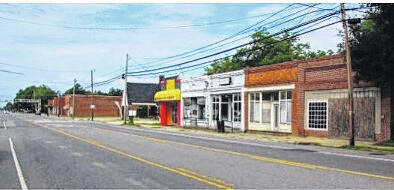WAGRAM — In the south of the US State of North Carolina there is a place named after Deutsch-Wagram (Gänserndorf district).
Nowadays, only a few people know why: a U.S. train driver and Napoleon Bonaparte are said to have been responsible.
If you ask Jim Buie how many residents of his hometown of Wagram know the story behind the name, he laughs.
“I would say most people don’t know,” said the amateur historian. “Most people probably don’t even know who Napoleon was.”
In Scotland County, in the very south of North Carolina, lies the “Town of Wagram,” a municipality with around 840 residents. A dense forest with an idyllic river surrounds the place, which still has a Lower Austrian name today.
The story behind the name is bizarre, and it begins in July 1809. Napoleon Bonaparte is about to conquer Europe, and in the Battle of Deutsch-Wagram he inflicts a severe defeat on the Austrian armed forces. The skirmish will go down in history as one of the bloodiest to date and would fascinate generations. So did an American train driver named William Fitzhugh Williams, known as “Puff Puff,” decades later.
“That was about 120 years ago,” said Jim Buie from Wagram in an interview with noe.ORF.at. At that time, cotton was transported from the countryside to market centers on the local railway line; “Puff Puff” Williams was one of those who frequently traveled the route.
“Williams came here all the time and dreamed that the towns along the railway line would develop,” Buie said.
Williams was not only a platoon leader, but also an expert in Napoleonic history, explains Buie. “In his free time, he read biographies about Napoleon.” These included the volume “The Life of Napoleon Bonaparte” by John SC Abbott, published in 1855. They are now privately owned, and William’s name can be found handwritten on one of the first pages of the book.
Williams is said to have been so moved by the story of Napoleon’s Battle of Deutsch-Wagram that he named the hamlet where his steam locomotive filled up with water “Wagram,” as local researcher Buie explains. However, it remains unclear how the train driver claimed the authority to name the place.
Wagram NC thrives with rail lines
It is historically certain that the name caught on and was officially recognized in 1911. Wagram flourished thanks to its connection to the railway line. Evidence of this is provided by the local newspaper, The Robesonian, which wrote in October 1910: “Last year (note 1909) there were only two shops in Wagram, today there are nine, five of which are brick buildings.”
The brick houses still characterize the cityscape of Wagram today. Similar to Deutsch-Wagram, Wagram is a street village on a railway line. The population has doubled since 1970, said Buie. He expects that it could double again in 20 years.
“Although Wagram was somewhat provincial in nature, the sense of community for me as I grew up there was heartwarming,” said Wagramer Mary Wayne Watson, describing her place today.
The residents come from Scottish and African-American immigrants, as well as Native Americans.
“The culture is a mixture,” Watson said.
Interest sparked in Paris
Today, only a few people know about the relationship with Lower Austria, according to local researcher Buie. He himself discovered the story by chance as a schoolboy in Paris. During a school trip, the class came across the Parisian boulevard “Avenue du Wagram.” It also commemorates the Battle of Deutsch-Wagram.
“That sparked my interest,” Buie said.
Tobias Mayr is a journalist based in Austria. This article was originally published at noe.ORF.at.

